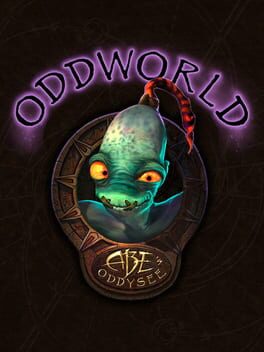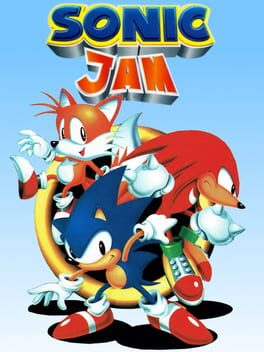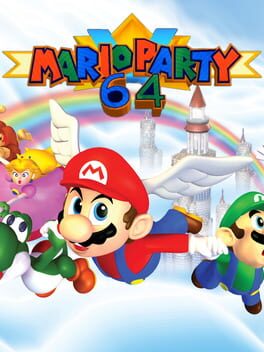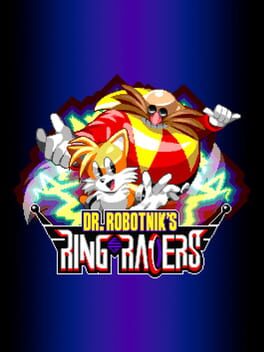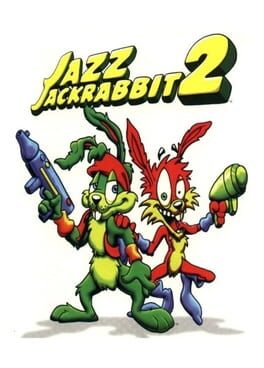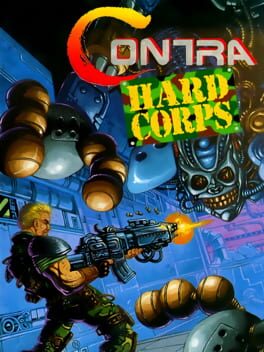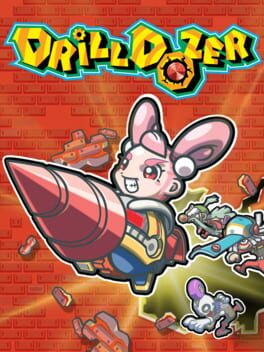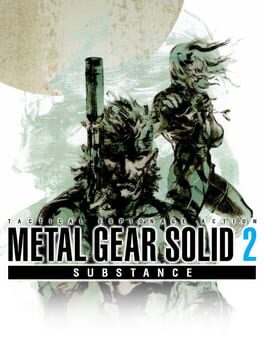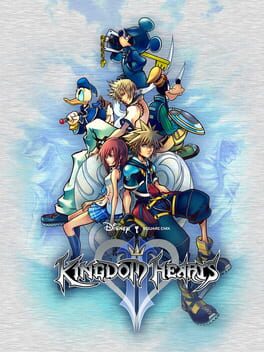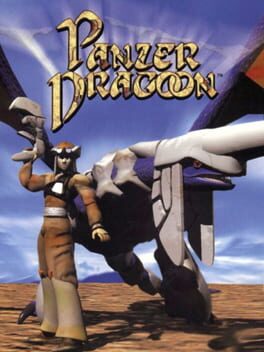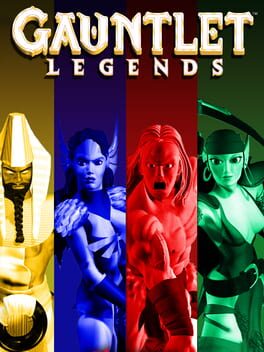3690 Reviews liked by Weatherby
Sonic Jam
1997
Finished Sonic World. This is a showcase for what Sonic Adventure could have been on the SEGA Saturn. This is proof that the Nights engine was truly capable of doing beautiful 3D environments with little performance issues. This is a proof of concept that could have been dismissed, but kept as a bonus for Sonic fans wanting a full 3D adventure. This is Sonic Team bringing new SEGA fans into the series with 4 classic games. This is...Sonic Jam!
Mario Party 64
2020
I love this idea and the execution was pretty fun. Making Mario Party minigames into bonus stars is so clever, and the Mario Party 1 boards are fairly diverse so you don't really feel like you're retreading ground in terms of level types.
However, and I'm not sure if this is my computer or settings or what, I kept having minigames crash on me. I couldn't do the one in DK's Jungle Adventure because it wouldn't load, a few of the ones you buy in shops wouldn't load, and probably more I'm forgetting, so I just can't finish this fully. Hell, even the final boss fight with Bowser I couldn't finish because it chose a minigame that wouldn't load.
The palm tree fight was incredible.
However, and I'm not sure if this is my computer or settings or what, I kept having minigames crash on me. I couldn't do the one in DK's Jungle Adventure because it wouldn't load, a few of the ones you buy in shops wouldn't load, and probably more I'm forgetting, so I just can't finish this fully. Hell, even the final boss fight with Bowser I couldn't finish because it chose a minigame that wouldn't load.
The palm tree fight was incredible.
A game by absolute freaks, for absolute freaks. If you don't lab kart racers everyday like they're fighting games and try your hardest to complete EVERYTHING in those games, this game is NOT for you.
Almost avant-garde in how little it cares for the casual kart racer audience, forcing you to complete an excruciating tutorial that can take between 30 minutes and 1 hour. To complete one grand prix before you can unlock multiplayer (or use a cheat code). To complete FIVE grand prixes before you can unlock the ability to use old SRB2kart MODS! (or use a cheat code). To stay with one color for your character unless you collect the others, and collect all 82 to unlock time trials. Never has there been a game so obsessed with making players master its mechanics before letting them play with others, as if they were preparing you for real-life war or something.
The game even opens slowly walking you through every option, unlocking each thing in the menu, everything contextualized with Tails and Eggman speaking to you, as Metal Sonic. Clearly, the devs tried to defeat Sonic Robo Blast 2's unnecessarily long intro cutscene, and in their quest for Genesis nostalgiawanking, they made the awful choice of only having the button prompts of the Genesis controller in menus and tutorials, not a huge issue in controller, it is on keyboard, especially because this game just has way too many mechanics and when you finally have to use an obscure one, you gotta press every key or go to the menu to check what key you assigned as the Y Genesis button.
Back to the tutorial, what did they think they were making here, Final Fantasy XVII?? It doesn't even explain things that clearly and there's so much dialogue, no option to reread, just once and trial and error.
It'd be one thing to make a kart racer with a lot of complex mechanics if they all feel cohesive and the races really push you to your limits, like Sonic Riders or even Bomberman Fantasy Race, but I don't think this is it when the mechanics are like 8 different types of boosts, one for each hazard, a charged melee attack? A parry? Two different types of roulettes that by default you have to stop manually???
A lot of this doesn't even come up in the races, it's for the single-player challenges, if it is in the race, you can also probably brute force it and use boost mechanic #54 instead of boost mechanic #301 as originally intended.
There's potential here, but it doesn't feel as good as SRB2kart to be honest. I gave up at the drift section in the tutorial cuz I just couldn't get it to work and the only drift you HAVE to do to proceed is the ultra charged one that gives you max boost #302! If the kart stops moving while you try to drift you instead initiate, you guessed it, another boost mechanic, one that has its own separate dedicated button so why make the drift worse by putting it on that button as well?
I usually don't rank games if I know that they're just not for me or if I played that little, but I don't see how the things I complain about would really do any good to any game in any genre, and even if all players use a save file with everything unlocked, I'll have to stand my ground unless they rework everything.
They tried to make a kart racer with more complex mechanics than Sonic Riders, and thought they had to have THE MOST mechanics to do that. They saw that some Riders players missed mechanics because of the lack of a tutorial and thought they had to overtutorialize EVERYTHING and demanded they mastered the game before even letting them race.
Don't think this will ever catch on and most will probably continue to just play SRB2kart.
Almost avant-garde in how little it cares for the casual kart racer audience, forcing you to complete an excruciating tutorial that can take between 30 minutes and 1 hour. To complete one grand prix before you can unlock multiplayer (or use a cheat code). To complete FIVE grand prixes before you can unlock the ability to use old SRB2kart MODS! (or use a cheat code). To stay with one color for your character unless you collect the others, and collect all 82 to unlock time trials. Never has there been a game so obsessed with making players master its mechanics before letting them play with others, as if they were preparing you for real-life war or something.
The game even opens slowly walking you through every option, unlocking each thing in the menu, everything contextualized with Tails and Eggman speaking to you, as Metal Sonic. Clearly, the devs tried to defeat Sonic Robo Blast 2's unnecessarily long intro cutscene, and in their quest for Genesis nostalgiawanking, they made the awful choice of only having the button prompts of the Genesis controller in menus and tutorials, not a huge issue in controller, it is on keyboard, especially because this game just has way too many mechanics and when you finally have to use an obscure one, you gotta press every key or go to the menu to check what key you assigned as the Y Genesis button.
Back to the tutorial, what did they think they were making here, Final Fantasy XVII?? It doesn't even explain things that clearly and there's so much dialogue, no option to reread, just once and trial and error.
It'd be one thing to make a kart racer with a lot of complex mechanics if they all feel cohesive and the races really push you to your limits, like Sonic Riders or even Bomberman Fantasy Race, but I don't think this is it when the mechanics are like 8 different types of boosts, one for each hazard, a charged melee attack? A parry? Two different types of roulettes that by default you have to stop manually???
A lot of this doesn't even come up in the races, it's for the single-player challenges, if it is in the race, you can also probably brute force it and use boost mechanic #54 instead of boost mechanic #301 as originally intended.
There's potential here, but it doesn't feel as good as SRB2kart to be honest. I gave up at the drift section in the tutorial cuz I just couldn't get it to work and the only drift you HAVE to do to proceed is the ultra charged one that gives you max boost #302! If the kart stops moving while you try to drift you instead initiate, you guessed it, another boost mechanic, one that has its own separate dedicated button so why make the drift worse by putting it on that button as well?
I usually don't rank games if I know that they're just not for me or if I played that little, but I don't see how the things I complain about would really do any good to any game in any genre, and even if all players use a save file with everything unlocked, I'll have to stand my ground unless they rework everything.
They tried to make a kart racer with more complex mechanics than Sonic Riders, and thought they had to have THE MOST mechanics to do that. They saw that some Riders players missed mechanics because of the lack of a tutorial and thought they had to overtutorialize EVERYTHING and demanded they mastered the game before even letting them race.
Don't think this will ever catch on and most will probably continue to just play SRB2kart.
Jazz Jackrabbit 2
1998
I never enjoy giving a well-regarded game a lukewarm review, and I promise I'm not doing it to be contrarian, but... have you ever experienced that "oh, crap" moment playing a strategy game like Civilization when you move your club-wielding cavemen to attack another player only to find yourself faced with tanks and fighter jets? That's kind of like how Jazz Jackrabbit 2 feels like.
It's a much more competently-made game than the original, free of its most egregious flaws (less slippery momentum, less screen crunch, enemy placement that is tricky but has less instances of "gotcha!"). It has plenty of the same virtues - nice visual design with a good variety of level aesthetics, nonlinear-ish level layouts with a good amount of secrets to discover, and a great soundtrack. The selection of guns are probably the gameplay's strongest suit - from the pitifully short-range flamethrower which is effective against erratically-flying enemies because the flames linger in the air slightly longer, to the motion-controlled bombs which are great against bosses because they allow you to damage a boss while you're safely on the other side of the screen, every weapon has at least a fringe use.
...it was also released in 1998. (for reference Klonoa came out in '97!)
I'm not saying that every game needs to break new ground, but if a game is treading familiar territory then I'd at least hope for it to be polished. Jazz Jackrabbit 2 has plenty of rough edges - its visual design is confusing, and it's hard to tell which platforms can be landed on and which are part of the background. The final level has the most egregious example of this - a floor that appears to be made of flowing lava but can be walked on like a normal floor! The controls are inconsistent, particularly in the execution of Jazz's ear propeller and Spaz's double jump. There's a pretty sizable catalogue of bugs - I softlocked myself multiple times, mostly by clipping into walls, but I also (twice) used the motion-sensor bomb and blew a boss clear out of the screen, with no choice but to reload an earlier save!
I do see that this game filled a very specific niche when it came out; in an era where developers were throwing out plenty of bathwater (and some babies) in their rush to cash in on the 3D craze, a functional old-school mascot platformer from a niche franchise scratches a very specific itch. But as someone without an emotional connection to this game, it comes across as an anachronism - archaic by 1998 standards, but not refined enough to count as homage.
It's a much more competently-made game than the original, free of its most egregious flaws (less slippery momentum, less screen crunch, enemy placement that is tricky but has less instances of "gotcha!"). It has plenty of the same virtues - nice visual design with a good variety of level aesthetics, nonlinear-ish level layouts with a good amount of secrets to discover, and a great soundtrack. The selection of guns are probably the gameplay's strongest suit - from the pitifully short-range flamethrower which is effective against erratically-flying enemies because the flames linger in the air slightly longer, to the motion-controlled bombs which are great against bosses because they allow you to damage a boss while you're safely on the other side of the screen, every weapon has at least a fringe use.
...it was also released in 1998. (for reference Klonoa came out in '97!)
I'm not saying that every game needs to break new ground, but if a game is treading familiar territory then I'd at least hope for it to be polished. Jazz Jackrabbit 2 has plenty of rough edges - its visual design is confusing, and it's hard to tell which platforms can be landed on and which are part of the background. The final level has the most egregious example of this - a floor that appears to be made of flowing lava but can be walked on like a normal floor! The controls are inconsistent, particularly in the execution of Jazz's ear propeller and Spaz's double jump. There's a pretty sizable catalogue of bugs - I softlocked myself multiple times, mostly by clipping into walls, but I also (twice) used the motion-sensor bomb and blew a boss clear out of the screen, with no choice but to reload an earlier save!
I do see that this game filled a very specific niche when it came out; in an era where developers were throwing out plenty of bathwater (and some babies) in their rush to cash in on the 3D craze, a functional old-school mascot platformer from a niche franchise scratches a very specific itch. But as someone without an emotional connection to this game, it comes across as an anachronism - archaic by 1998 standards, but not refined enough to count as homage.
Contra: Hard Corps
1994
Run ‘n Gun-a-thon — Part 3
Hard Corps is a tribrid of classic run ‘n gun action, Castlevania III branching paths and unique characters, and the boss rush focus of Cuphead. It’s easily the most distinct and replayable Contra. I would call it the best entry…if there was more platforming to vary up the level design like the first game. Each successive entry emphasized platforming less and less, and it’s practically nonexistent here. I suppose not every run ‘n gun needs platforming, but if you’re going to streamline the action into a boss rush, why still have sections where the player can mindlessly hold fire while moving right to reach the next single-screen arena? The levels are very dull outside of the bosses, which, to be fair, it excels at. Neat attack patterns and pitch-perfect pacing outside of a drawn-out autoscroller fight in level 4 and a slight overreliance on the “projectiles raining down from the sky” attack.
I’m glad I checked out the classic Contra games. They could be better, but none of them were bad. This marathon isn’t over yet though. I have two more beloved run ‘n guns on my list, both of them from the same developer and console generation. Stay tuned for my reviews of those!
Hard Corps is a tribrid of classic run ‘n gun action, Castlevania III branching paths and unique characters, and the boss rush focus of Cuphead. It’s easily the most distinct and replayable Contra. I would call it the best entry…if there was more platforming to vary up the level design like the first game. Each successive entry emphasized platforming less and less, and it’s practically nonexistent here. I suppose not every run ‘n gun needs platforming, but if you’re going to streamline the action into a boss rush, why still have sections where the player can mindlessly hold fire while moving right to reach the next single-screen arena? The levels are very dull outside of the bosses, which, to be fair, it excels at. Neat attack patterns and pitch-perfect pacing outside of a drawn-out autoscroller fight in level 4 and a slight overreliance on the “projectiles raining down from the sky” attack.
I’m glad I checked out the classic Contra games. They could be better, but none of them were bad. This marathon isn’t over yet though. I have two more beloved run ‘n guns on my list, both of them from the same developer and console generation. Stay tuned for my reviews of those!
Persona 3 Reload
2024
This review contains spoilers
An excellent and surprisingly reserved remake of a game that still feels at odds, in a good way, with persona 4 and 5. For better or worse, reload smoothes out the experience that makes persona 3 so unique and many of the additions feel relatively deliberate and measured to not completely wash out the oppressive feel and emotional plot threads that still managed to break me in the end. The glacial pacing and structure is still there which I don't mind, but I do appreciate the many interactions and events added with SEES in further expanding their team camaraderie and having more to do during the game outside of January. The link episodes are brisk and excellent in fleshing out the male party members, and honestly work much better than dragging out another ten rank social link during the day in a game that could have used more balance between day and night events. Strega is still a one note villain but reload does bless us with Jin and Takaya using the shift mechanic and Takaya pulling out a sick theurgy in his second battle, so it’s still a success for me.
A part of me does feel more could have been done in maintaining the original's resistance within the battling/dungeon traversal as the difficulty suffers quite a lot halfway through, even with Merciless being leagues better and actually operative compared to persona 5's version. As one of ten fans of the original Tartarus, reload's iteration is absolutely beautiful and doubles down to be more gamey and 'addictive' but it does sacrifice the tension and threats of the enemies with the changes to the landscape and battles. The Theurgies are a wonderful treat of power fantasy and spectacle while also adding more interesting dynamics to each member's kit, but I feel that they could have been restricted or handled more conservatively, even if I do enjoy breaking this game in half.
While reload does deliver the darker tone of the original, it's not perfect in translating the dread and oppression well throughout the journey, though this was most apparent to me in specific cutscenes. Take the original and reload's introduction on the train; they follow mostly the same structure but the new animation and direction lacks the bite and visceral feel, specifically in how the original juxtaposes Makoto ominously arriving on the train with Yukari's struggle to summon her persona while Burn my Dread blairs jaggedly and cuts in and out of the scenes. Reload didn't have to replicate this but the new intro feels more standard-fare and less haunting and off-putting, even Makoto's awakening scene falls into this same issue by following the same beats of the original but the transformation of Orpheus into Thanatos ends up being a bit goofy? The cast overall is a dimension friendlier than the original, but I'm not sure this is more due to nuances in the voice direction of the new cast or slight changes in the script, though I feel it is more the former. Still, reload does a solid job with the rest of the cutscenes in the games outside of one of the final animated scenes showing Makoto returning after sealing Nyx. Even some reload iterations I found a bit more memorable than before such as Chidori's sacrifice and Junpai's second persona awakening and Shinji's death (outside of Koromaru low key ruining it with his howling at the end). It's not a complete loss in atmosphere as January itself still encapsulates the impending doom of the fall very well, alongside just turning down the brightness like two-three notches in the options.
Even with the strong effort reload is in delivering persona 3 to the 'masses', it still doesn't strike as a "definitive" version of it, which I think is way better than an end-all-be-all edition ever existing given the small and major differences and interpretations baked into each version at this point. Reload is probably the second best way of experiencing persona 3 as I still would encourage people to play FES if they can. The whole idea of it being "outdated" is categorically false and it still offers so much in its tone and gameplay that reload drastically differs or falters from in many ways. Even still, reload is a wonderful way to experience the best persona game and the 150+ hours I put in on Hard and Merciless have been well worth the return back to Tatsumi Port Island.
And since the remake train has pretty much started with this series now, I should probably run and get a head start on Persona 1 and 2 before those new remakes come out at some point while Persona 6 and its re-released special green edition sits in a cobweb somewhere in the Atlus studios.
A part of me does feel more could have been done in maintaining the original's resistance within the battling/dungeon traversal as the difficulty suffers quite a lot halfway through, even with Merciless being leagues better and actually operative compared to persona 5's version. As one of ten fans of the original Tartarus, reload's iteration is absolutely beautiful and doubles down to be more gamey and 'addictive' but it does sacrifice the tension and threats of the enemies with the changes to the landscape and battles. The Theurgies are a wonderful treat of power fantasy and spectacle while also adding more interesting dynamics to each member's kit, but I feel that they could have been restricted or handled more conservatively, even if I do enjoy breaking this game in half.
While reload does deliver the darker tone of the original, it's not perfect in translating the dread and oppression well throughout the journey, though this was most apparent to me in specific cutscenes. Take the original and reload's introduction on the train; they follow mostly the same structure but the new animation and direction lacks the bite and visceral feel, specifically in how the original juxtaposes Makoto ominously arriving on the train with Yukari's struggle to summon her persona while Burn my Dread blairs jaggedly and cuts in and out of the scenes. Reload didn't have to replicate this but the new intro feels more standard-fare and less haunting and off-putting, even Makoto's awakening scene falls into this same issue by following the same beats of the original but the transformation of Orpheus into Thanatos ends up being a bit goofy? The cast overall is a dimension friendlier than the original, but I'm not sure this is more due to nuances in the voice direction of the new cast or slight changes in the script, though I feel it is more the former. Still, reload does a solid job with the rest of the cutscenes in the games outside of one of the final animated scenes showing Makoto returning after sealing Nyx. Even some reload iterations I found a bit more memorable than before such as Chidori's sacrifice and Junpai's second persona awakening and Shinji's death (outside of Koromaru low key ruining it with his howling at the end). It's not a complete loss in atmosphere as January itself still encapsulates the impending doom of the fall very well, alongside just turning down the brightness like two-three notches in the options.
Even with the strong effort reload is in delivering persona 3 to the 'masses', it still doesn't strike as a "definitive" version of it, which I think is way better than an end-all-be-all edition ever existing given the small and major differences and interpretations baked into each version at this point. Reload is probably the second best way of experiencing persona 3 as I still would encourage people to play FES if they can. The whole idea of it being "outdated" is categorically false and it still offers so much in its tone and gameplay that reload drastically differs or falters from in many ways. Even still, reload is a wonderful way to experience the best persona game and the 150+ hours I put in on Hard and Merciless have been well worth the return back to Tatsumi Port Island.
And since the remake train has pretty much started with this series now, I should probably run and get a head start on Persona 1 and 2 before those new remakes come out at some point while Persona 6 and its re-released special green edition sits in a cobweb somewhere in the Atlus studios.
I absolutely love this game. An absurd vanity project of a game that has boss fights implemented through the suggestion of 50 Cent's son. It's a fairly competent Gears of War clone. The mechanic where you get a score multiplier by clicking in the right stick to shout some swears after killing an enemy is inspired.
Drill Dozer
2005
You know how people complain about Kid Icarus: Uprising or The World Ends With You inflicting hand pain? Drill Dozer is that game for me. Claw gripping the GBA just sucks, even on the original wide model, and it taints the whole experience to the point where I just can't enjoy it on its home system. Any game where ibuprofen is a required component is a no-go.
"Play it on the GameBoy Player!", I hear you say, and I have! That solves the hand pain but then you're left with the game, which isn't all that great. It's slow, clunky, and constantly sounds like a dental drill. It has great music, but in the climactic moments you'll barely be able to hear it because, you know, drill. The charm of the game is in the visual spectacle and the constant rumble but man, you can do so much better on the GBA. Wario Land 4 is right there.
I gotta play something good soon or I'm gonna lose my marbles.
"Play it on the GameBoy Player!", I hear you say, and I have! That solves the hand pain but then you're left with the game, which isn't all that great. It's slow, clunky, and constantly sounds like a dental drill. It has great music, but in the climactic moments you'll barely be able to hear it because, you know, drill. The charm of the game is in the visual spectacle and the constant rumble but man, you can do so much better on the GBA. Wario Land 4 is right there.
I gotta play something good soon or I'm gonna lose my marbles.
Nobody is invalidated, but nobody is right.
You don't need me to explain why MGS2 is a banger so I won't waste your time. In terms of actual hands-on gameplay it's a bit lacking, but you're here for Kojima and this is peak Kojima.
What struck me this time around is how its focus on "context" is somehow, unfortunately, more relevant now than ever. I don't know if this is the result of pure coincidence or supernatural prescience, I just know it hits. Death Stranding's themes surprised a lot of people but its narrative framework was here over a decade before.
It's also genuinely hilarious throughout. Inspired decision for a game with such complex ideas to also give you a button so Raiden can (internally) talk shit mid-conversation whenever you want. Kojima is king.
You don't need me to explain why MGS2 is a banger so I won't waste your time. In terms of actual hands-on gameplay it's a bit lacking, but you're here for Kojima and this is peak Kojima.
What struck me this time around is how its focus on "context" is somehow, unfortunately, more relevant now than ever. I don't know if this is the result of pure coincidence or supernatural prescience, I just know it hits. Death Stranding's themes surprised a lot of people but its narrative framework was here over a decade before.
It's also genuinely hilarious throughout. Inspired decision for a game with such complex ideas to also give you a button so Raiden can (internally) talk shit mid-conversation whenever you want. Kojima is king.
Kingdom Hearts II
2005
gonna brag on here so excuse my smugness
my brother was stuck on one of the final bosses of this game, i think it was the dude right before the redhead, and ofc my brother being godzilla he got angry and screamed alot (hes broken 2 discs before) so when he took a break i was thinking "u know what ill try". and yes i beat that son of a bitch, the very first time i played a kingdom hearts game was this moment. as you can tell im pretty epic 😎
my brother was stuck on one of the final bosses of this game, i think it was the dude right before the redhead, and ofc my brother being godzilla he got angry and screamed alot (hes broken 2 discs before) so when he took a break i was thinking "u know what ill try". and yes i beat that son of a bitch, the very first time i played a kingdom hearts game was this moment. as you can tell im pretty epic 😎
Panzer Dragoon
1995
I think this game has a weird learning curve and it has some odd spikes of difficulty here and there, but it grows on me with each playthrough. I love the one sequence nature of it, and it has some pretty tight level design. I like Zwei more in most regards but the challenge of this one is what really sets it apart for me. I wish I felt more for the music, like flight is such an incredible song, the best in video games, but every other song is a bit forgettable to me. I think my favorite level is the tunnel sequence, it's so intense and the boss in that is killer. It's definitely worth learning and beating
Gauntlet Legends
1998
podcast fodder. it occurred to me over the course of playing that for four-player couch co-op like this, the mindlessness is a boon. you're supposed to be catching up with your friends and fucking around, not actually invested in the game.
it pulls surprisingly heavily from the original gauntlet with little variation: destroy generators that endlessly spawn, open chests and gates with keys, use potions as AoEs, destroy walls, open other walls. the only other mechanical changes is some light meter management, where you can activate one of three different special abilities depending on the level of the gauge or siphon some off to use a dash-twirl kinda action. other than weaving those in, you'll just be mashing the shoot/attack button, and with the advent of a 3D world and shifting perspective for the game, they've slathered auto-aim all over your toolkit, so there's almost no engagement other than being there to press the button... and if you're close enough to an enemy you'll auto-attack anyway, so who cares.
the main intrigue instead is the variety of environments and stages, each with their own hazards and puzzles to solve. you might rend an arena asunder by pressing a switch, skewing the two halves apart and exposing new corridors in the process. there's moments where you'll rearrange a set of catwalks by pressing a series of switches (although you never have access to more than one at once) to raise and lower them to match your character's height. in some (many) instances, you must painstakingly root out a breakable wall and enter it to press a switch and open a different wall somewhere else. indeed, most of the game consists of finding switches to press to access a new area; it is not uncommon for there to be chains of three to seven switches that lead to each other in the span of a single room. is what the switches activate occasionally cool, giving you a new path through the often intricate area designs? sure. but expect the whole game to follow virtually the exact same loop throughout: mash attack, press switch.
there's occasional gesturing to more of diablo-like system, the style which would quickly eat this series' lunch by the sixth gen, though it often doesn't land given the game's arcade-focused nature. other than adding a leveling and stats system to the original gauntlet experience, there's also this odd loot/power-up component, some of which is random but others of which are actually specific, often obscure unlockables within particular levels. of course, seeing as there's no permanence regarding items beyond keys/potions, these end up being temporary powerups; the thrill of grinding out skorne 1 so that you can get a piece of his armor set feels quaint when faced with the reality that said item will disappear 90 seconds into the next stage you play. as an aside: per the original game you're intended to replenish your health or revive yourself with extra credits, but seeing as this console version does not have that system, dying will kick you back out to the hub with whatever health you had going in. that might seem fine, but if you actually want to replenish to full health, expect to spend a lot of time grinding the first level for the 400-500 in health pickups that are guaranteed. for my final boss run, where I needed my level 60 max of 7000 health after spending most of the game maintaining about 2000, this was quite a chore.
this sega dreamcast version seems like a hodge-podge of each of the other versions of this game. compared to the playstation and n64 versions, which have a different set of levels and a proper inventory system, the dreamcast version serves as a more direct port of the original's levels and item system. oddly enough, it does have the additional endgame levels and skorne refight from the original home ports. it also carries in certain mechanical changes from the game's incremental sequel dark legacy, such as all of the new character classes and a functionally useless block ability; what the fuck is the point of a block in a mostly ranged game where having attack advantage is always a priority to avoid getting flanked and overwhelmed? probably the most bizarre aspect of the dreamcast version is that it runs like dogshit even with only a single player, and it retains the somewhat hideous look of the original game. not sure why the dc wasn't able to handle a relatively low-poly game built for a 3DFX banshee gpu, but I'm going to assume fault on the part of the developers.
still, a podcast game with some cool level visuals has its own appeal. was unfortunately left curious about dark legacy and the later gameplay revisions in seven sorrows. an arcade-style dungeon crawler does appeal to me in a base way, and I appreciate that this was an early attempt at creating an arcade game with a proper progression system (including rudimentary usernames and passwords!). should probably bring some friends along for the ride if I ever get a wild hair to try again.
it pulls surprisingly heavily from the original gauntlet with little variation: destroy generators that endlessly spawn, open chests and gates with keys, use potions as AoEs, destroy walls, open other walls. the only other mechanical changes is some light meter management, where you can activate one of three different special abilities depending on the level of the gauge or siphon some off to use a dash-twirl kinda action. other than weaving those in, you'll just be mashing the shoot/attack button, and with the advent of a 3D world and shifting perspective for the game, they've slathered auto-aim all over your toolkit, so there's almost no engagement other than being there to press the button... and if you're close enough to an enemy you'll auto-attack anyway, so who cares.
the main intrigue instead is the variety of environments and stages, each with their own hazards and puzzles to solve. you might rend an arena asunder by pressing a switch, skewing the two halves apart and exposing new corridors in the process. there's moments where you'll rearrange a set of catwalks by pressing a series of switches (although you never have access to more than one at once) to raise and lower them to match your character's height. in some (many) instances, you must painstakingly root out a breakable wall and enter it to press a switch and open a different wall somewhere else. indeed, most of the game consists of finding switches to press to access a new area; it is not uncommon for there to be chains of three to seven switches that lead to each other in the span of a single room. is what the switches activate occasionally cool, giving you a new path through the often intricate area designs? sure. but expect the whole game to follow virtually the exact same loop throughout: mash attack, press switch.
there's occasional gesturing to more of diablo-like system, the style which would quickly eat this series' lunch by the sixth gen, though it often doesn't land given the game's arcade-focused nature. other than adding a leveling and stats system to the original gauntlet experience, there's also this odd loot/power-up component, some of which is random but others of which are actually specific, often obscure unlockables within particular levels. of course, seeing as there's no permanence regarding items beyond keys/potions, these end up being temporary powerups; the thrill of grinding out skorne 1 so that you can get a piece of his armor set feels quaint when faced with the reality that said item will disappear 90 seconds into the next stage you play. as an aside: per the original game you're intended to replenish your health or revive yourself with extra credits, but seeing as this console version does not have that system, dying will kick you back out to the hub with whatever health you had going in. that might seem fine, but if you actually want to replenish to full health, expect to spend a lot of time grinding the first level for the 400-500 in health pickups that are guaranteed. for my final boss run, where I needed my level 60 max of 7000 health after spending most of the game maintaining about 2000, this was quite a chore.
this sega dreamcast version seems like a hodge-podge of each of the other versions of this game. compared to the playstation and n64 versions, which have a different set of levels and a proper inventory system, the dreamcast version serves as a more direct port of the original's levels and item system. oddly enough, it does have the additional endgame levels and skorne refight from the original home ports. it also carries in certain mechanical changes from the game's incremental sequel dark legacy, such as all of the new character classes and a functionally useless block ability; what the fuck is the point of a block in a mostly ranged game where having attack advantage is always a priority to avoid getting flanked and overwhelmed? probably the most bizarre aspect of the dreamcast version is that it runs like dogshit even with only a single player, and it retains the somewhat hideous look of the original game. not sure why the dc wasn't able to handle a relatively low-poly game built for a 3DFX banshee gpu, but I'm going to assume fault on the part of the developers.
still, a podcast game with some cool level visuals has its own appeal. was unfortunately left curious about dark legacy and the later gameplay revisions in seven sorrows. an arcade-style dungeon crawler does appeal to me in a base way, and I appreciate that this was an early attempt at creating an arcade game with a proper progression system (including rudimentary usernames and passwords!). should probably bring some friends along for the ride if I ever get a wild hair to try again.
